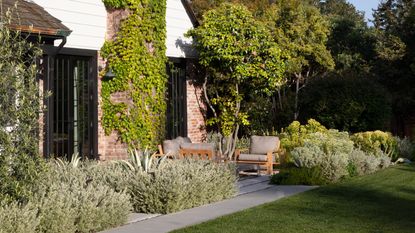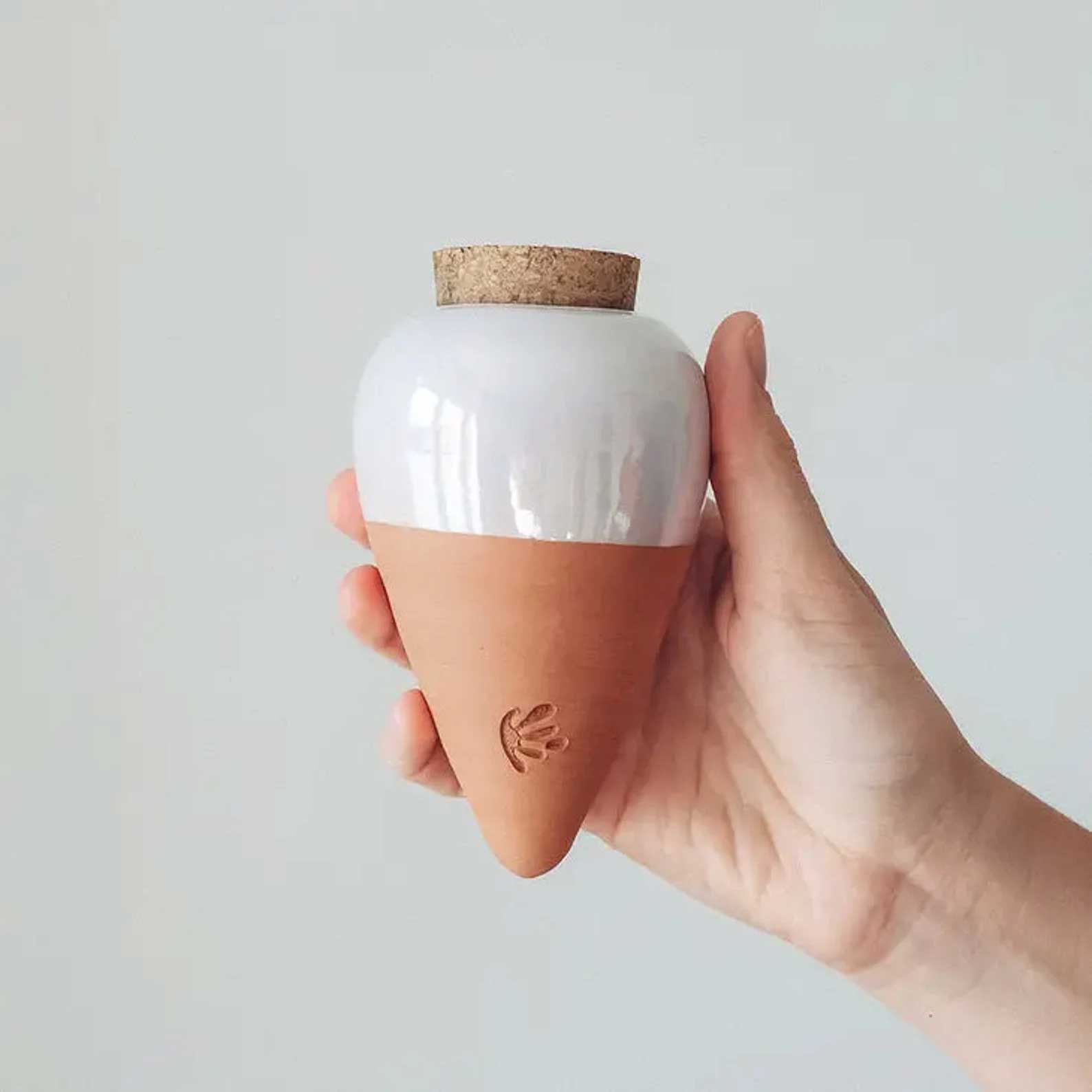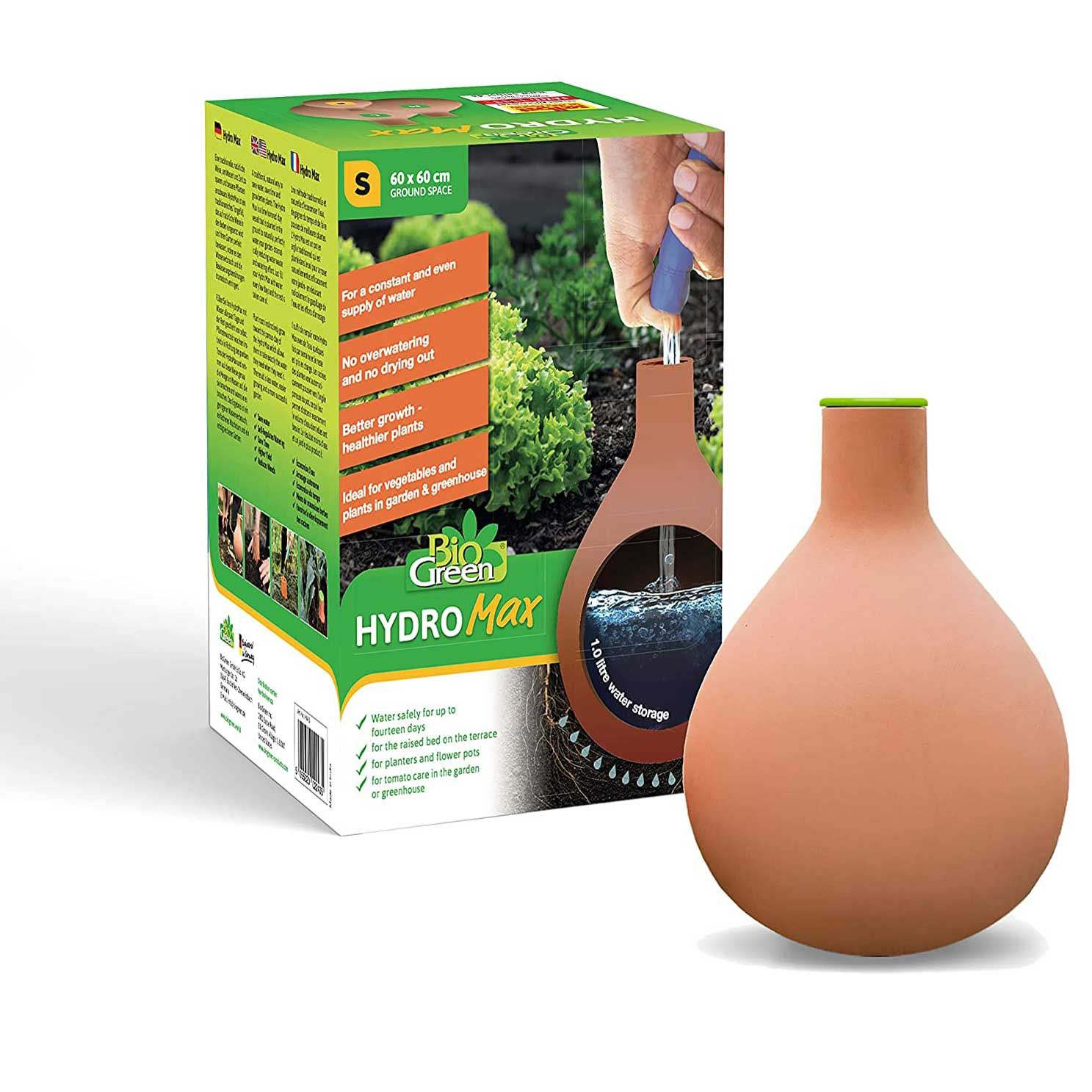What is an olla? This centuries-old trick might be the answer to your plants surviving a hot summer
A garden that self-regulates its watering so it's never too dry or too waterlogged might sound like it requires smart tech, but it's actually an idea that's been around for hundreds of years


It's hard to ignore the fact that the summers are getting hotter, and it's something that's worth factoring into your backyard planting. After all, what's the point of spending time and money investing in new plants for your garden, if they're all just going to perish in a heatwave anyway?
You probably already know about the best time to water your garden when it's hot out, and about the sort of drought-tolerant plants that can stand up to high temperatures and dryer soil, but shy of installing an expensive irrigation system, it might feel like there's little you can do to help your garden plants otherwise when the mercury soars.
However, there's an idea that's been around for centuries that's suitably low-tech that can really help to keep your garden soil from drying out, deeper in the ground compared to a shallow sprinkling, while avoiding waterlogging it. Have you heard of an 'olla'? If not, you're about to, while discovering why it's still relevant for a modern garden.
What is an olla?

'An olla is an untreated terracotta vessel that is buried beneath the soil,' explains Karen Gibson, a Master Gardener from Ohio and founder of Sprouted Garden. 'An olla features a spout which sticks out above the surface. You fill the olla with water via the spout.'
So you've got a terracotta vessel buried in your flower beds - now what? Well, an olla works thanks to something called 'soil moisture tension', where if the soil is dry, it will draw the water through the porous clay. 'The water then slowly seeps through the terracotta wall to the soil surrounding it,' Karen tells us. 'The roots of the plant in the container seek out that moisture source, and grow around it.'
What are the benefits of ollas?
You can think of ollas as the original self-watering planter. 'Because the olla is buried beneath the soil, out of sunlight and weather, the liquid contained within avoids evaporation and provides a constant and reliable source of water,' Karen adds. This is especially important during summer, when the surface of your beds or containers can become dry very quickly, ensuring there's enough water at the roots to keep your plants happy.
The other great thing about ollas is that they won't release water if your soil is too wet, helping to avoid waterlogging. They're ideal for how to keep your garden hydrated but not soaked. 'Ollas are great tools for keeping the soil in containers at the proper level of moisture, neither dry nor too wet,' Karen says.
Best ollas for pots
 Best for vacation watering
Best for vacation watering
 Most stylish
Most stylish

Best ollas for flower beds


 Best for shallow roots
Best for shallow roots
What plants benefit from an olla?
Ollas can be used to irrigate almost any kind of garden plants, but they work particularly well with certain types. They work best with plants that have deep-reaching, fibrous root systems, especially vegetable garden crops like melons, squashes and tomatoes.
'Large plants especially benefit from ollas,' Karen tells us. 'Each of my large indeterminate tomatoes get their own 4- to 6-cup olla (whether planted in the ground or in a container). Pepper plants can share an olla, with 3 or 4 plants in a ring around the olla. Large, vining crops, such as winter squash, can use a smaller olla planted near the crown. These types of vegetables are very thirsty feeders and can grow lush and productive when they don't have to compete for water, or endure irregular watering frequencies.'
Small bushes, including berries and roses, are excellent candidates for ollas, as are medium-sized flowering plants, such as echinacea and zinnias. They're also great to plant alongside young trees to help them get established.
'Container gardens benefit a lot from ollas, as plants in pots dry out much faster than plants in the ground,' Karen adds. 'Even a small olla sunk next to the plant can extend water needs by 2 or 3 days. They keep potted plants healthy and thriving by breaking that too-dry, too-wet cycle that occurs at the height of summer heat.'
How do I use an olla?
Ollas are relatively simple to use. Dig a hole the size of your terracotta vessel in your container or flower bed, and place your olla inside. You'll want to make sure the spout is one to two inches above the ground so that debris and earth doesn't wash inside (but you can also find ollas with lids, too).
You'll need an olla per pot when container gardening, and in a flower bed or border, you'll need to position them strategically. 'A large bed would need several spread out in a pattern,' says Karen. Staggering them every 2-3 feet is your best bet, but you can also just choose to focus around plants that would benefit most. Also consider that the larger the olla, the bigger the area it will water.'
'As a rule of thumb, an olla can provide water to an area twice its diameter. So, a 12" wide olla will service an area 24" wide (or 12" in all directions from the olla),' Karen says. 'Or to put it in other measurements, two or three bulbous (as opposed to narrow and tall) one-gallon ollas could potentially service a 4' x 4' bed of flowers or vegetables.'
'For a long, narrow flower bed that borders a walkway or side of a house, you could plant flowers and ollas in a sort of checkerboard pattern,' Karen adds.
You just need to also consider access so that you can fill up your ollas as required. 'The spout or neck of the olla still needs to be accessible without stepping on low-to-the-ground flowers,' Karen tells us.
How often do you need to fill an olla?
'The frequency of refills depends largely on environmental conditions, which can change throughout the growing season, Karen tells us. 'During a rainy stretch, for example, you might not need to refill ollas at all until the ground dries out, because ollas release water only when the surrounding soil is dry.'
'But when the heat of summer aligns with the peak of a plant's production, you might need to refill it every couple of days,' she adds. 'The learning curve of ollas is small, however, and the first season using them provides sufficient experience in getting the "feel" for how often water needs to be replenished.'
Are there any drawbacks?
Of course, ollas aren't the perfect solution. Like large terracotta pots, they're often not cheap to buy, and if you're looking to plant across a whole flower bed, the cost may be prohibitive.
If you plant ollas alongside trees, or plants with woody roots, you also run the risk of the trees roots breaking or cracking the olla at some point in the future. If you're having to fill your olla more regularly, chances are a crack has formed.
'If you live in a region with frigid winters and repeated cycles of frozen ground, thawing, raining/snowing, and refreezing, ollas should be dug up in the fall and stored in a shed, basement, or garage to extend their lives,' Karen tells us. 'Terracotta is a fairly sturdy material, however, and you should expect to get several years out of every pot. My olla collection is 8 years old, and I have had no cracks or breakage.'
'I dig up my ollas every year regardless because I turn and amend the soil of my gardens, and practice crop rotation (which means I'll need the ollas elsewhere the following year).'
There's also some maintenance in keeping an olla in perfect working order. 'Minerals can build up on the olla pots, which can clog the pores and requires cleaning,' Karen says. To remedy, mix a 1:1 solution of water and white vinegar, fill the ollas and let rest for several hours to allow the vinegar to seep through. Then scrub and rinse thoroughly, Karen suggests.
Be The First To Know
The Livingetc newsletter is your shortcut to the now and the next in home design. Subscribe today to receive a stunning free 200-page book of the best homes from around the world.

Hugh is the Editor of Livingetc.com. From working on a number of home, design and property publications and websites, including Grand Designs, ICON and specialist kitchen and bathroom magazines, Hugh has developed a passion for modern architecture, impactful interiors and green homes. Whether moonlighting as an interior decorator for private clients or renovating the Victorian terrace in Essex where he lives (DIYing as much of the work as possible), you’ll find that Hugh has an overarching fondness for luxurious minimalism, abstract shapes and all things beige. He’s just finished a kitchen and garden renovation, and has eyes set on a bathroom makeover for 2024.
-
 How to Thaw a Frozen Pipe — Learn Everything You Need to Know in 5 Minutes With This Guide
How to Thaw a Frozen Pipe — Learn Everything You Need to Know in 5 Minutes With This GuideWinter storm caught you off guard? We asked an expert — just how do you thaw a frozen pipe?
By Hugh Metcalf Published
-
 The 12 Very Best Silk Bedding Pieces — As Our Style Editor Says: 'It's What Dreams Are Made Of!'
The 12 Very Best Silk Bedding Pieces — As Our Style Editor Says: 'It's What Dreams Are Made Of!'Slumber in lustrous luxury with the very best silk bedding sheets, duvets, pillowcases, and more — your sleep score will thank us later
By Julia Demer Published

